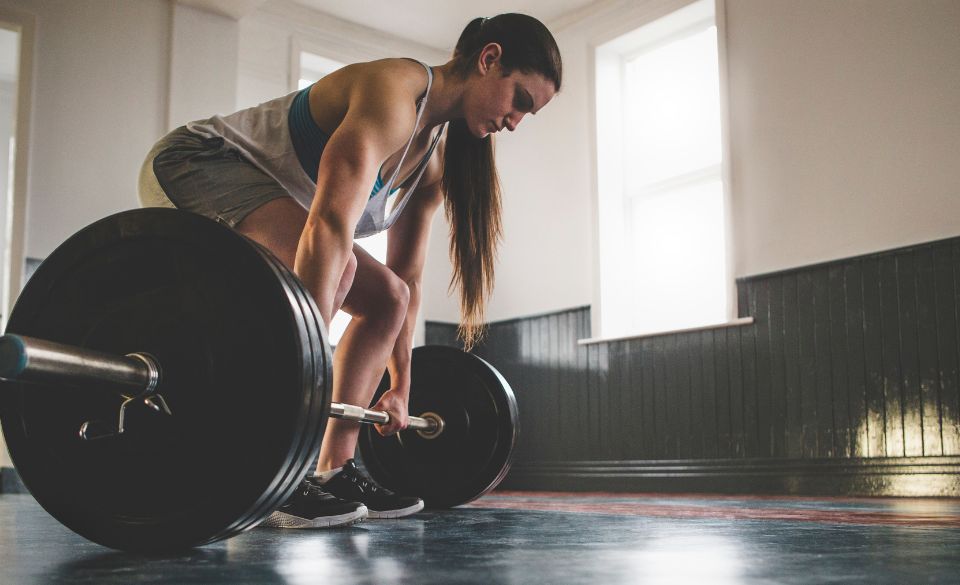
Deadlifts for Glutes: A Comprehensive Guide
Page Contents
Strong glutes are essential for good posture, athletic performance, and injury prevention. And while many exercises can help build glute strength, deadlifts are one of the best options. In this article, we’ll explore how deadlifts can help strengthen your glutes, which types of deadlifts are most effective, and how to incorporate them into your workout routine.
Anatomy of the Glutes
Before we dive into deadlifts, let’s review the anatomy of the glutes. The gluteal muscles are a group of three muscles: the gluteus maximus, medius, and minimus. The gluteus maximus is the largest muscle in the group and is responsible for hip extension and rotation. The gluteus medius and minimus are smaller muscles that help with hip abduction and rotation.
In addition to these specific functions, the glutes are also critical for daily activities such as walking, running, and climbing stairs. Weak glutes can contribute to lower back pain, knee pain, and hip pain.
Types of Deadlifts for Glutes
Now that we know why glute strength is so important, let’s explore how deadlifts can help. Deadlifts are a compound exercise that work several muscles at once, including the glutes, hamstrings, and lower back. There are several different types of deadlifts, each with its own variations and benefits.
Conventional Deadlifts
Conventional deadlifts are a classic exercise that involves lifting a barbell from the ground. To perform a conventional deadlift, stand with your feet hip-width apart, with the barbell centered over your midfoot. Bend your knees and grasp the bar with an overhand grip, then lift the bar by extending your hips and knees until you’re standing up straight. Lower the bar back to the ground with control.
Conventional deadlifts are an excellent exercise for building glute strength because they require significant hip extension. However, they can also be challenging to master, especially for beginners.
Romanian Deadlifts
Romanian deadlifts are similar to conventional deadlifts, but with a slightly different focus. To perform a Romanian deadlift, start in the same position as a conventional deadlift, but instead of lifting the bar from the ground, lift it from a slightly elevated position, such as a block or rack. Then, hinge at your hips and lower the bar down your legs until you feel a stretch in your hamstrings. Pause briefly, then lift the bar back up to the starting position.
Romanian deadlifts are a great exercise for targeting the glutes and hamstrings, as well as improving hip mobility. They’re also easier to perform than conventional deadlifts, making them a good option for beginners.
Sumo Deadlifts
Sumo deadlifts are a variation of the conventional deadlift that involves standing with a wider stance and gripping the bar with a narrow, overhand grip. To perform a sumo deadlift, stand with your feet wider than shoulder-width apart and your toes pointed outward. Grasp the barbell with a narrow grip and lift the bar by extending your hips and knees.
Sumo deadlifts place more emphasis on the inner thigh muscles, or adductors, than conventional deadlifts. However, they may not be as effective at targeting the glutes specifically.
How to Incorporate Deadlifts into Your Glute Workout Routine
So, now that we know how effective deadlifts can be for building glute strength, how do we incorporate them into our workout routine? Here are a few tips:
Aim to include deadlift exercises in your routine at least once a week.
– Start with a weight that you can lift comfortably for 8-10 repetitions, and gradually increase the weight as you get stronger.
– Consider doing different types of deadlifts on different days to target your glutes from different angles.
– Always prioritize proper form over weight or reps. A rounded back or overextension at the top of the lift can put unnecessary stress on your lower back and negate the benefits of the exercise.
– Don’t neglect other glute exercises, such as squats, lunges, and hip thrusts, which can help complement and enhance the benefits of deadlifts.
Common Mistakes to Avoid
While deadlifts can be an incredibly effective exercise for building glute strength, they can also be risky if not performed with proper form. Here are a few common mistakes to avoid:
Rounding your back: This can put excessive stress on your lower back and increase your risk of injury. Keep your spine straight and your chest lifted throughout the lift.
Overextending at the top: While it’s important to fully extend your hips at the top of the lift, overextending can cause your lower back to hyperextend and lead to injury.
Neglecting other muscle groups: While deadlifts can be an excellent exercise for building glute strength, it’s important to also target other muscle groups to maintain overall strength and balance.
Final Words – Deadlifts for Glutes
Deadlifts are an excellent exercise for building glute strength and improving overall fitness. By incorporating different types of deadlifts into your workout routine and prioritizing proper form, you can help prevent injury, improve posture, and enhance your athletic performance. Whether you’re a beginner or an experienced lifter, adding deadlifts to your routine can help you achieve your glute goals and maintain a strong, healthy body.



